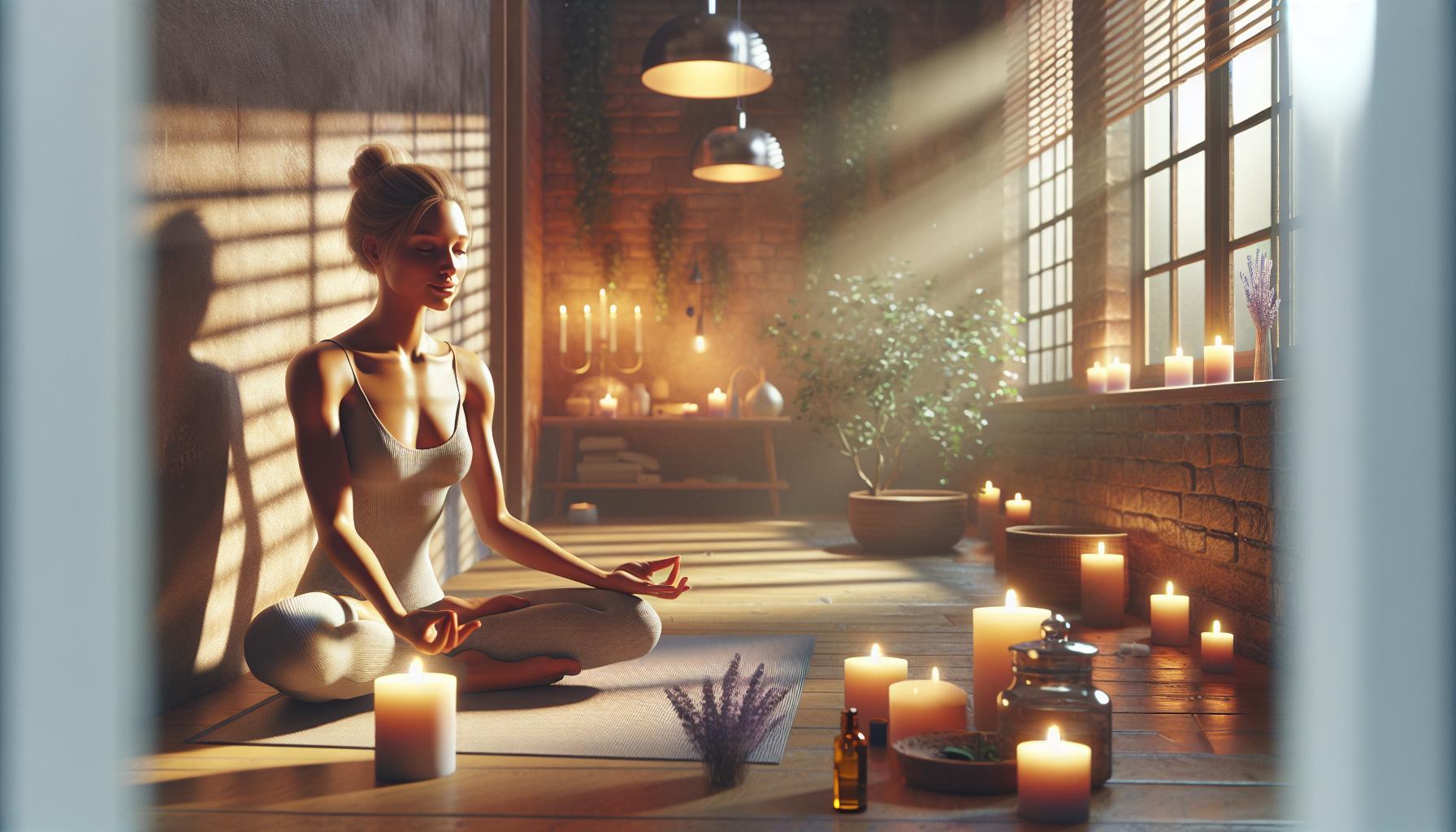Master Stress Reduction: How to Use Visualization Techniques Effectively
Imagine we’re uncovering a secret, much like the hidden notes tucked within an old family cookbook, revealing not just recipes but remedies for the soul. Today, I’m diving into the art of visualization, a technique as soothing as a warm cup of tea on a brisk afternoon. It’s a simple, yet powerful tool that can melt away stress, painting peace with the strokes of our own imagination. As we explore together, think of each step as a stroke of color adding depth and tranquility to your day. Let’s embrace this journey with the same enthusiasm as leafing through a beloved album, discovering that each image, each moment we visualize, can be a refuge, transforming stress into serenity with just a close of the eyes. Join me, and let’s learn how to craft our own serene landscapes, right in the comfort of our minds.
Understanding Visualization Techniques for Stress Reduction
As we continue our exploration of stress-relieving techniques, let’s dive deeper into visualization, a powerful tool that transforms mental images into a calming sanctuary. I’m here to guide you through the nuts and bolts of how visualization can significantly reduce stress, making every day a little brighter and more manageable.
What Is Visualization?
At its core, visualization involves creating vivid, detailed mental images, focusing your mind on peaceful and positive scenarios. It’s like being the master of your own mental TV show, carefully selecting scenes to broadcast tranquility directly into your daily life. For instance, imagine lounging on a sun-drenched beach or strolling through a lush, green forest. Here, the power lies in engaging as many senses as possible. Hear the waves, feel the sand, smell the fresh pine—as intricate as you can make it, the more effective it becomes. Neuroscience supports this, demonstrating that the brain sometimes doesn’t distinguish well between real and vividly imagined experiences. If you’re consistent, your brain starts to absorb these serene visuals as if they were real, helping to ease your stress levels.
Types of Visualization Techniques
There are several types of visualization techniques to help manage stress, each serving a different purpose:
- Guided Imagery: This involves a guided tour through serene landscapes, often accompanied by a narrator (which can be a recording or a therapist guiding you through the process). It’s particularly useful for beginners or those who find it challenging to paint detailed pictures on their mental canvas.
- Progressive Muscle Relaxation (PMR): This pairs physical relaxation with visual cues. You tense each muscle group as you breathe in, and imagine the stress melting away as you breathe out. It’s like turning stress into vapor—up, up, and away!
- Symbolic Visualization: Here, you confront stressors directly by visualizing them as manageable objects. Imagine your stress as a balloon. Now, picture releasing it into the sky, watching it shrink as it floats away, taking your worries with it.
Each technique offers a unique approach to managing stress, giving you several tools to keep in your back pocket. Whether you’re a skeptic or a seasoned meditator, give these techniques a shot—you might just be surprised at how much they can help lighten your mental load.
Benefits of Visualization in Stress Management

Just like a favorite comfort food can soothe the soul, visualization serves as mental comfort food, helping to manage stress and mellow out those frazzled nerves. Let’s dive into how whipping up some serene mental images can really change the game in handling daily grinds and pressures.
Emotional Benefits
Imagining yourselves in a hammock by the beach or nestled in a quiet mountain retreat isn’t just a daydream—it’s a powerful trick to trick your brain into relaxation mode. Here’s why visualization is a mega tool for emotional well-being:
- Reduces anxiety: By visualizing peaceful scenes, your brain gets a break from the chaos of everyday life. It’s like giving your mind a mini-vacation.
- Enhances mood: Regular visualization practices can increase levels of serotonin, making you feel more upbeat and less down in the dumps.
- Boosts resilience: Facing a tough day? Picture yourself successfully navigating challenges, and you’ll feel more confident and capable.
- Strengthens emotional stability: Regular mental escapes not only help in acing stress but also in maintaining your cool during upsets.
Physical Health Improvements
Let’s get real—your mind and body are on the same team. When your brain chills out, your body follows suit. Check out these cool physical perks of regular visualization:
- Lowers blood pressure: Consistently diving into calm mental imagery can keep your heart from working overtime, thus keeping your blood pressure levels in a healthier range.
- Reduces stress-related symptoms: Headache, muscle tension, or that annoying stomach upset—they can all take a hike when you engage in regular visualization.
- Improves sleep quality: By calming the mind before bedtime, visualization acts like a natural sleep aid, helping you drift off faster and enjoy deeper sleep.
- Boosts immune function: Believe it or not, a relaxed mind encourages a stronger immune system, so you get sick less often.
Step-by-Step Guide on Using Visualization to Reduce Stress

Let’s dive right into how you can harness the power of visualization to kick stress out of your life and invite in a breeze of calm.
Setting Up Your Environment
Creating the right atmosphere is key to effective visualization. Here’s how I set up my own stress-busting zone:
- Choose a Quiet Spot: Find a place where interruptions are a no-show. It could be a cozy corner of your bedroom or even a secluded spot in your local park.
- Get Comfortable: Grab a comfy chair, a fluffy pillow, or a yoga mat. Make sure you’re as comfy as a cat in a sunbeam.
- Set the Mood: Dim lighting or candles can work wonders. If it’s daylight, natural light is your best friend.
- Neutral Background Noise: Sometimes, complete silence can be deafening. A soft background tune or the sound of nature can help. Apps with forest or ocean sounds are perfect for this.
- Aromatherapy: A hint of lavender or sandalwood can elevate your sensory experience. If you’re scent-sensitive, a fresh, clean smell works wonders too.
Guided Visualization Processes
Now that your oasis is ready, it’s time to dive into the actual visualization. Here’s a straightforward process I follow:
- Choose Your Scenario: Start with a scenario that spells peace for you—imagine a tranquil beach or a quiet forest path.
- Involve All Your Senses: Feel the sand under your feet, hear the waves crash, see the sunset, smell the ocean, and maybe taste the salt in the air.
- Guided Audio Tools: If creating scenes isn’t your forte, use guided visualization apps. Plug in, close your eyes, and let the voice lead the way.
- Breathe Deeply: Integrate deep, calming breaths into your visualization. Each breath should help you dive deeper into the scene.
- Repeat Often: Make this a regular practice. The more you visualize, the more natural it becomes, and the greater the stress reduction.
Measuring Your Progress
How do you know if it’s working? Keep track like this:
- Mood Journal: Take note of your mood before and after each session. Are you feeling more relaxed?
- Physical Signs: Observe any physical changes. Are your shoulders less tense? Is your breathing slower?
- Sleep Patterns: Has your sleep improved? More quality sleep could be a clue that your stress levels are dropping.
- General Wellbeing: Do you generally feel happier or more at peace? That’s a huge win.
- Consistency is Key: Stick with it for at least a few weeks. Visualization is like any other skill—it gets better with practice.
Challenges and Tips for Effective Visualization

Embarking on your visualization journey might seem like setting sail in calm seas, but beware—a few tricky waves could disrupt your serene cruise. Let me steer you through some common pitfalls and expert tips that’ll keep you afloat and advancing toward your stress-free horizon.
Common Pitfalls
Visualization isn’t just a flick of a magic wand—it’s more like learning to play an instrument. Some common slip-ups can interfere with your practice:
- Being too vague: Crafting your mental sanctuary? Details are your best friends. Imagine the aroma of pine trees, the texture of soft grass, the sound of a babbling brook. Specifics make your visualizations stick.
- Seeking perfection: Toss out the notion of a “perfect” session. If your mind wanders (and, trust me, it does that), just gently guide it back without beating yourself up.
- Inconsistency: Hitting your visualization practice sporadically won’t build that mental muscle. It’s like watering a plant—regular care is what makes it thrive.
- Limited sensory engagement: Don’t just see; try to use all your senses. The more senses you engage, the more real and impactful your visualized world becomes.
Consistency is your anchor—without it, you’ll find yourself drifting away from the benefits of this powerful technique.
Expert Tips for Success
Let’s crank up your visualization game with some expert-level moves:
- Create a routine: Slot your visualization practice into your daily schedule. Morning person? Maybe start your day with a visualization session. Night owl? Unwind before bed with a peaceful mental journey.
- Use audio guides: Not sure how to paint mental pictures? Guided audio recordings are like having a GPS for your brain—they can lead you through sceneries and scenarios beautifully.
- Keep a journal: Track your sessions and feelings in a journal. What worked? What felt off? Over time, you’ll tailor a visualization groove that fits you like your favorite pair of jeans.
- Be patient: Just like Rome wasn’t built in a day, mastering visualization takes time. Celebrate small victories along the way, like feeling a bit more relaxed or having a slight smile after a session.
By dodging common hurdles and wielding these pro tips, you’ll refine your visualization skills and navigate towards a stress-light life with more ease and confidence. Ready to get the picture?
Conclusion
As we wrap up our journey through the art of visualization for stress relief I hope you’re inspired to try out these techniques for yourself. Remember the power lies in the details and your commitment to regular practice. Whether it’s through guided imagery progressive muscle relaxation or crafting your own serene mental landscapes the benefits are vast and varied. By engaging all your senses and embracing the process you’ll find that visualization isn’t just a method for managing stress—it’s a pathway to a more peaceful and resilient life. So find your quiet corner breathe deeply and let your imagination lead the way to tranquility.

